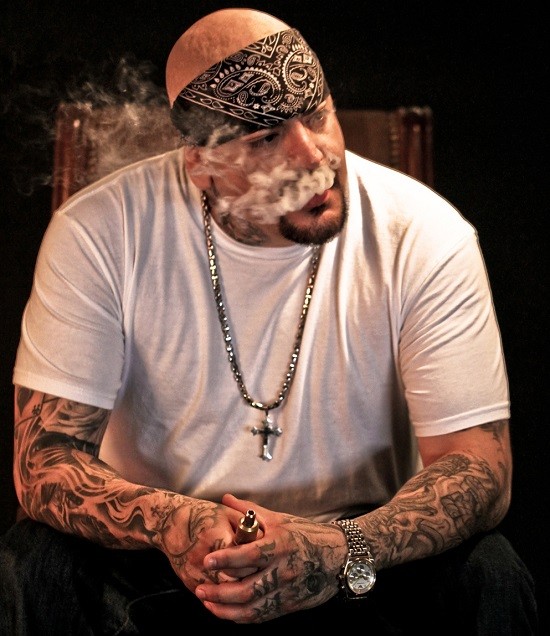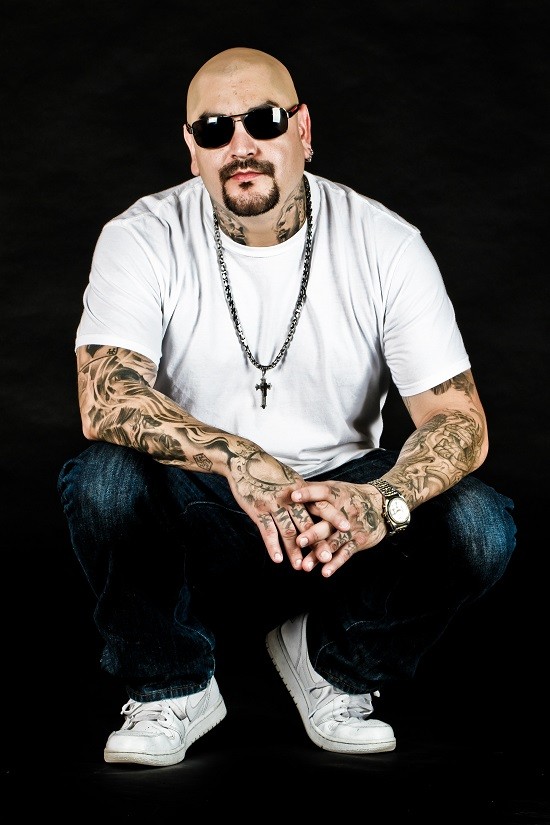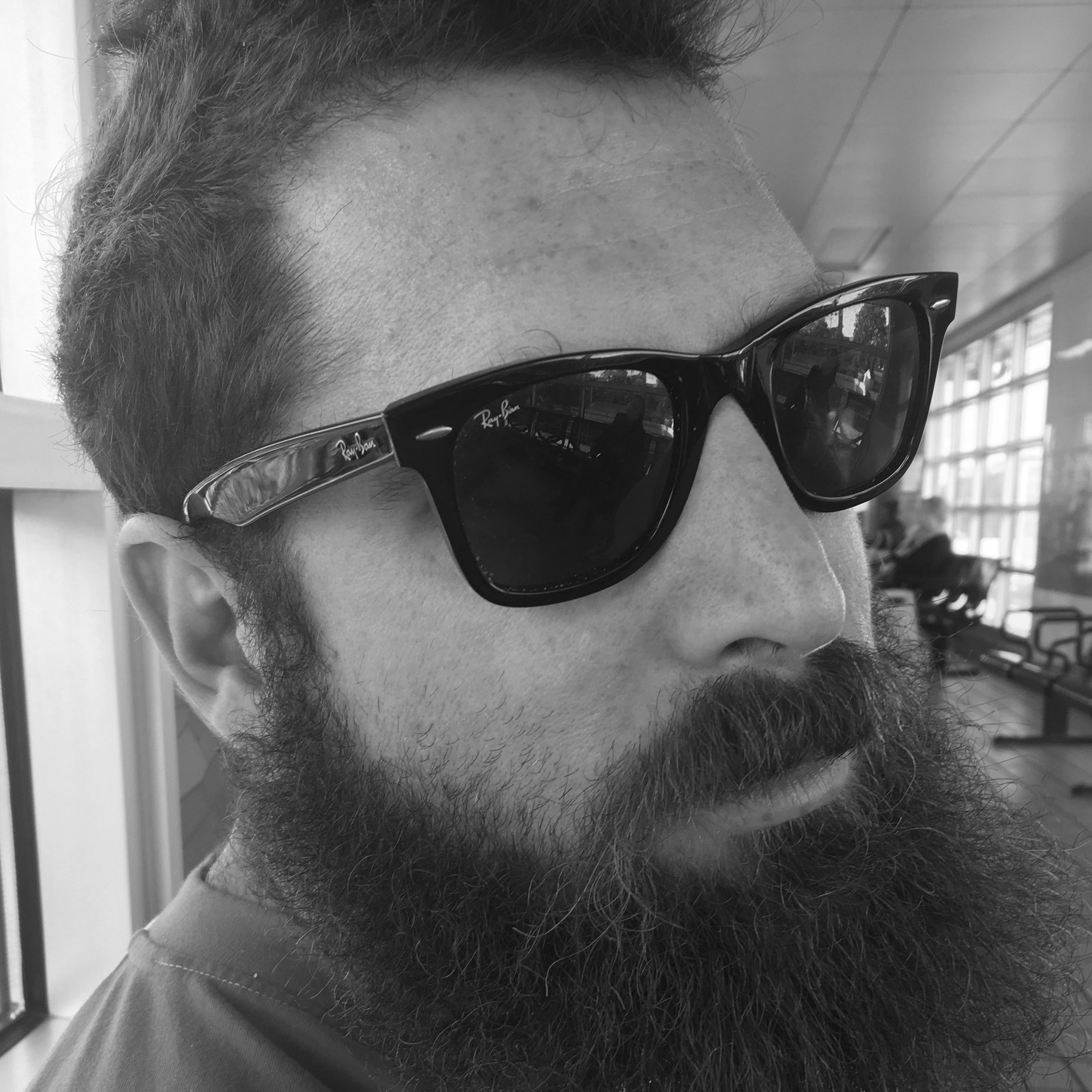
A lot of tattooers will tell you that Steve Soto (the head of Orange's Goodfellas Tattoo Studio, not the bassist from the Adolescents) is among the top dogs when it comes to modern black and gray tattooing. Some will go as far as calling him the current “Godfather of Gangster Tattoos” and heap praise on him for his “Chicano style” work and the impact he's had in SoCal's tattooing scene.
]
See also: Sullen Art Collective Rules the World of Tattoo-Themed Clothing
But if you ask Soto, he'll tell you he doesn't even do gangster tattoos or necessarily Chicano tattoos, he just likes to work in black and gray.
“People call it 'Chicano style' and 'west coast style' and all that, but it's just black and gray,” Soto says. “It has a west coast feel to it, but it all comes from street art. They're not gangster tattoos, those are like prison tattoos.”
There's no doubt about it, the fine-line style of black and gray tattooing as we know it began in SoCal (exactly who started it/which shop it came out of is up for debate, depending on who you ask), but it's artists like Soto who take it to the next level. Rather than do the same type of tattoos that have made him an icon in OC's tattooing scene, the 36-year-old chooses to challenge himself with new twists and spins on every piece.
“It's the nature of how black and gray (tattooing) is,” Soto says. “Traditional doesn't change, it's in the name that it's based on tradition. Black and gray is always changing. Artists can do so much more worth getting excited about. It's about developing new ways to do things and make them different while still keeping it genuine, not taking iconic images and making them wacky.”
When Soto began tattooing in 2001, he didn't have dreams of becoming a world-famous tattoo artist, but he knew he wanted to go into art. At that time, he was just a community college student looking to make some money on the side so he could pursue an art degree at a university. As he started learning more and more about tattooing, things changed.
“I had a misconception about it when I started tattooing,” Soto says. “I thought it was just some dudes in a shop putting ink on skin. I thought there were limitations to what it could look like. That was back when flash was popular, so I decided I wanted to be the one who drew the flash. I saw guys coming in selling flash for $300 or $400 each time and I wanted to do that, so I was making money in tattooing before I could even tattoo.”
Outside of tattooing, Soto also designs for companies like Microsoft and Electronic Arts to make sure the tattooed characters in their games have top-notch ink. He's also traveled the world (he's hitting Europe, Australia and South America within the next few months) and made designs for clothing, energy drinks, and much more, but when it comes down to it, Soto always comes back to tattoos.
“Tattooing is the nucleus of it all,” Soto says. “I have a lot going on, but I'm always working on evolving my style of tattoo. Recently, I've been working on these clown girls, like with the gangster clown makeup, but doing them in my own way. Again, it has to be genuine and capture the image, but still different.”
[

How has tattooing changed since you got into the industry?
It's changed a lot. I think I got in at the perfect time. There's a lot more competition in the quality of tattoos, because there's a lot of people doing good tattoos in a certain style. It's a lot harder to make money doing one style, but at the same time, that makes it easier to not have a specific style. If you're just doing good, quality tattoos that are your own, people will pay for something that looks different.
Do you think the new mainstream appeal of tattooing has led to some of that change?
Yeah, it's a good thing and a bad thing. Everyone has a reason to get a tattoo now, so there are more people coming in the door. It's also created a lot of competition, so it's a double-edged sword. The old school guys wanted to keep it a secret, but this all happened anyway with the TV shows. It created people who want to be in it for the fame, and many of them won't last. The popularity will probably die out eventually.
Any ideas what you think might cause the popularity to decrease?
Maybe when machines can tattoo or when it's totally painless. We have creams and everything to numb the pain now, but you still go through that pain. Part of the idea of getting a tattoo is going through the pain. There's something to be said about that respect for someone when you see they have a tattoo and you know how that felt. If there's no pain involved, what's the difference between a tattoo and a t-shirt?
How is tattooing in OC different than tattooing anywhere else?
I think Orange County has a whole lot of talent in everything. It creates a ton of talent, and it's not just in tattooing. Sports, music, surfing, MMA, there's just something about it that creates talent. Maybe it's because it's more easygoing, or maybe it's the weather, but there's a ton of talent, especially in tattooing.
What's the biggest misconception people have about tattoos?
Sometimes people think tattoos aren't supposed to hurt. They hurt for everyone. If you don't complain about the pain, then you're trying really hard not to. I know it hurts, you know it hurts. People think they're a pussy if they say it hurts, but they're not, it's just part of getting a tattoo.
Goodfellas Tattoo Studio, 2345 N Tustin St, Orange, 714-637-8282, Instagram: @stevesototattoo
Follow Josh on Twitter: @jcchesler.
Follow OC Weekly on Twitter @ocweekly or on Facebook!

Josh Chesler used to play baseball for some pretty cool teams, but now he just writes about awesome stuff like tattoos, music, MMA and sneakers. He enjoys injuring himself by skateboarding, training for fights, and playing musical instruments in his off time.


I’m in love with the cbd products and https://organicbodyessentials.com/products/cbd-oil-for-sleep ! The serum gave my skin a youthful help, and the lip balm kept my lips hydrated all day. Eloquent I’m using moral, natural products makes me quality great. These are age my must-haves after a fresh and nourished look!